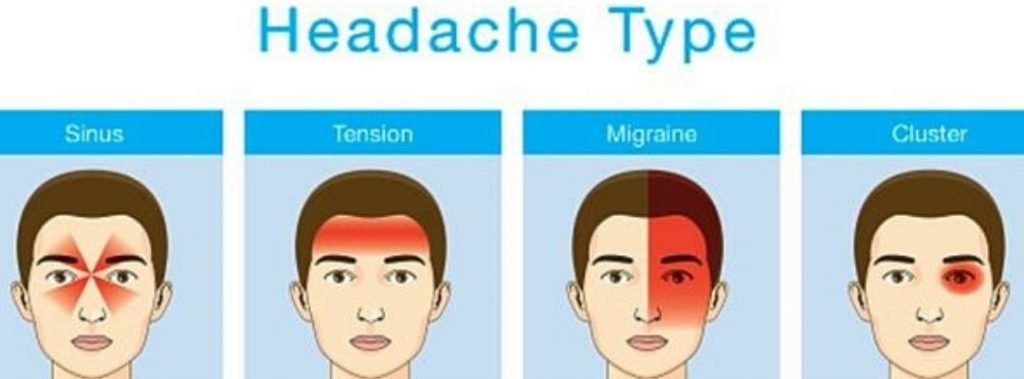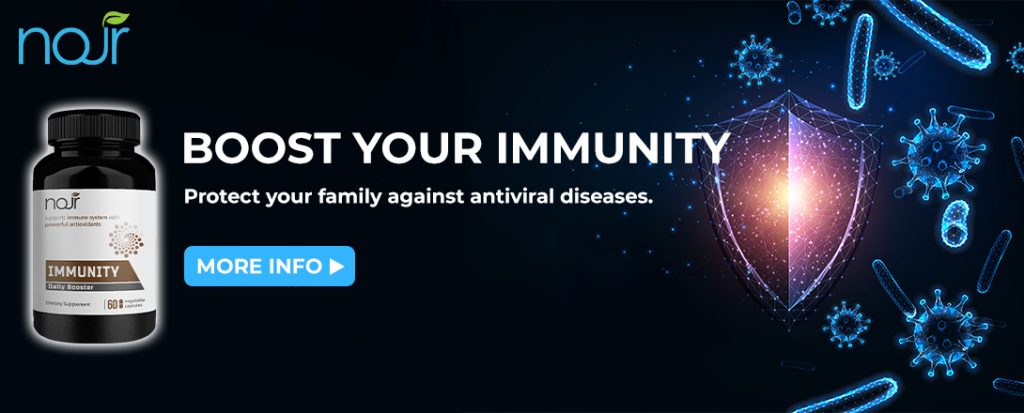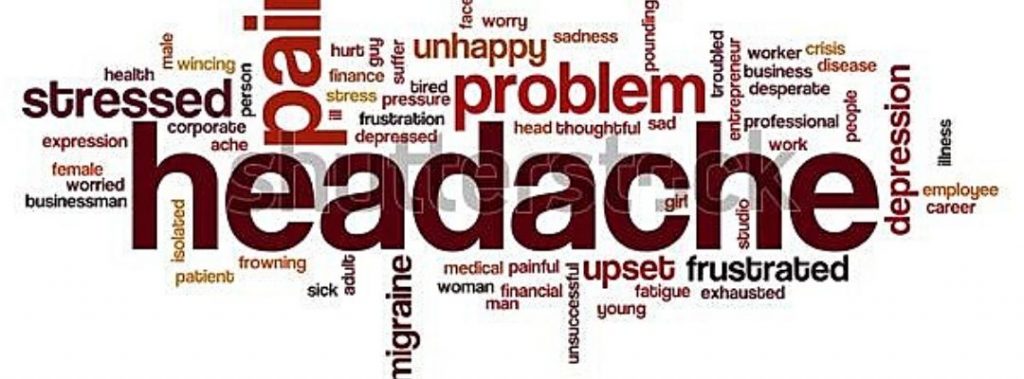Headaches can be a real pain. Almost everybody gets them at some point, making them one of the most common health complaints. While all headaches are associated with pain or discomfort in the head or face, there are more than 100 different kinds, with varying symptoms and intensity.
Some will require medical attention, and others can be treated with over-the-counter medication or home remedies. Some—known as secondary headaches—are caused by underlying medical conditions, while others stand alone as the main medical problem; those are called primary headaches.
The most common types of headaches that cause people to seek medical care are primary headaches—tension headaches, migraines, and cluster headaches.

Tension headaches
Tension headaches are the most common type of headache. Stress and muscle tension are thought to play a role, as are genetics and environment. Symptoms usually include moderate pain on or around both sides of the head, and/or pain in the back of the head and neck. Tension headaches build slowly and are not usually associated with nausea or vomiting. They can be chronic, occurring often or even every day.
Tension headaches can be treated with over-the-counter pain relievers if they occur only occasionally, but a chronic condition may require prescription medication. Your doctor may suggest a tricyclic antidepressant or muscle relaxant, along with good sleep hygiene, regular exercise, or relaxation techniques such as massage or yoga.
Migraines
Migraine headaches often involve intense, throbbing pain that may be accompanied by nausea or vomiting, light sensitivity, and loss of appetite. Women make up 75% of migraine sufferers, according to theMigraines can last several days and run in families, indicating a possible genetic cause. They may also be linked to a chemical imbalance in the brain.
Treatment depends on frequency and severity. Your doctor may prescribe a so-called rescue medication, to be taken for immediate relief, and/or a preventative drug to help avoid future migraines.
“Most migraines are mild and infrequent and can be managed on their own with over-the-counter medication. If they become debilitating, that’s when they require medical attention.”

Cluster headaches
Cluster headaches are characterized by sudden-onset severe pain, generally behind one eye. They are the most severe type of headache, but are less common than tension headaches and migraines. Cluster headaches tend to occur in groups, sometimes daily or multiple times a day. They last 1-3 hours and pain recurs in the same way each time.
Cluster headaches can be brought on by alcohol or tobacco use, bright light, heat, and foods that contain nitrates, such as lunch meat or bacon. While there is no known cure, your doctor can recommend ways to mitigate the pain.
Options may include lifestyle changes such as quitting smoking; oxygen treatment; Verapamil, a medication that relaxes blood vessels; or Prednisone, a steroid medication to reduce inflammation and swelling.
Sinus headache
Sinuses are a series of connected, hollow spaces behind your cheekbones, forehead and nose

The sinuses produce thin mucus. As air travels through the sinuses to your lungs, the mucus traps harmful particles like dust, pollutants and bacteria. The mucus drains out through your nose
What people call a sinus headache is actually a migraine with nasal symptoms. A true sinus headache develops because of a sinus infection (sinusitis). The infection causes pain and pressure in the sinuses.

